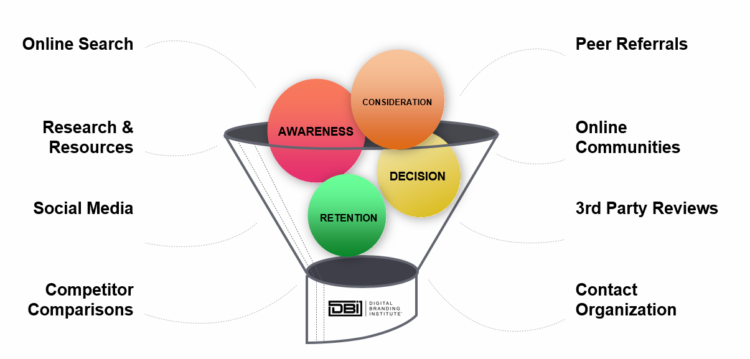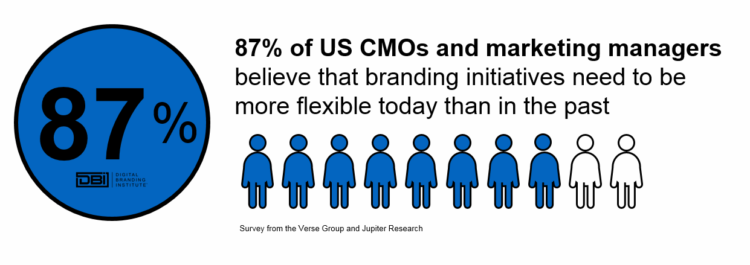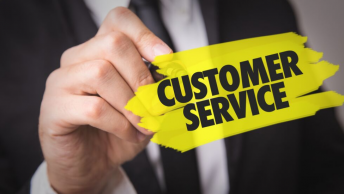The marketing tactics you used five years ago are no longer effective. There’s a new way to think about how your customer purchases your products or services. Today’s path to purchase is much different. Find out how…
Do you remember how you used to shop? Going to the mall or grocery store to pick up a few items. Now, all that has changed. You probably think about going shopping in a whole new way.
A New Way To Think About Your Customer Behavior
The best way to understand change in consumer behavior is to examine the ways in which marketers track these behaviors. There are several ways to gather this data and use it to better engage with your target audience. Examining your target customer’s digital footprint will enable you to glean more information about who they are, what they like, and what challenges exist.
SEE ALSO: 4 Reasons Why Consumers View Brands As Relationships
Consumer Footprint
When consumers think of a digital footprint they often think about the things they put on social media and how that contributes to their perception. These things are the social media updates, the blogs we write, videos and streams we create. Every day, hundreds of millions of people take photos, make videos and send texts. As consumers create and engage with this content they create massive amounts of data that can be tracked.
As marketers, we gather data by using tracking technologies as well as the content consumers share. Specifically, here’s how the data is collected:
![]()
SEE ALSO: 10 Engagement Metrics You Should Be Tracking
Tracking technologies
- Clickjacking – when an attacker uses multiple transparent or opaque layers to trick a user into clicking on a button or link on another page when they were intending to click on the top level page.
- Invisible/Drawing (javascript related)
- Flash cookies – Like regular cookies, Flash cookies contain information about when you visited the site and may contain tracking and settings information.
- Invisible/Disguised LINKS (driver monitoring devices)
- Web Cookies -small pieces of data sent from a website and stored on the user’s computer by the user’s web browser while the user is browsing.
- Built Into Apps – These tracking technologies include location services, geofencing, etc.
You share the information
- Texting
- Credit card purchases
- Using your mobile phone
- Social media
This data allows brands to collect data on consumer preferences, purchases, and trends. Insurance companies may use a consumer’s digital footprint to determine the level of risk when issuing an insurance policy.
Bottomline, a consumer’s digital footprint can be used to determine the value that consumer brings to the brand.
Now, what about your brand…
Brand Footprint
Your brand’s digital footprint is a visual map of how and where a brand lives online, where target groups spend time online, and how these properties are or are not connected via brand behavior and communication.

Similar to how we examine a consumer’s digital footprint to determine the value they bring to us, consumers are looking at our brand’s digital footprint to see what value we bring to them.
Here is where the look:
Our Hub – This is where consumers find your brand. It could be your website, microsite, or landing page. It is essentially a place in which all your marketing communications is connected.
Owned Platforms – This is where you have a strong position in the digital space that you can leverage for the advancement of your brand. These owned platforms will certainly shape consumer perception.
Paid Platforms – This is where you purchase impressions or interactions online. Consumers examine the type of paid engagements (e.g. digital ads) your brand has developed. Remember, it’s not the message necessarily. Consumer perception is also shaped by the medium, context, and timing of your paid engagements.
Earned Media – This is where other consumers are talking about your brand. Earned media can come from current customers or influencers. This chatter can take place as status updates, blog posts, videos, shares or direct messages (think ‘dark social’).
Brand Health – This will give consumers an indication of how active your brand is in the digital space. Most consumers believe a healthy and thriving digital brand consists of one that is actively engaging with followers, publishing and sharing content, and not fully automating communication.
SEE ALSO: How to Tell Your Digital Brand Story
Overall, it is important to understand that consumers are becoming savvier. They are quick to decode our marketing messages. They understand the various tactics that are used to convert them. And they probably are more familiar with online marketing than ever before.

Which is why they examine our brand’s digital footprint to determine the value we may bring before deciding to work with us. As digital branders, it is important to understand how our consumer’s thoughts and perceptions have changed so we can adjust our tactics accordingly.
It starts with meeting the customer where they are instead of expecting this to be aligned with our marketing funnel and persona buckets.
That’s an old way of thinking…
Old Path to Purchase
If you’re a marketer, this traditional marketing funnel may be a familiar sight. You may have set up a digital marketing campaign that addresses each phase of the funnel: awareness, consideration, decision, and retention.

However, you may have also noticed that this linear funnel is starting to lose effectiveness. As consumers become savvier they start to circumvent any funnel you may build.
For instance, a significant number of consumers understand that they will be put in a funnel after giving their contact information. This can happen when registering for an event, signing up for a service, or when a downloading a lead magnet. This is why it is critical to establish a strong digital brand.

Many consumers will get their information from sources outside of your pre-defined funnel. Which is why many of the traditional marketing funnels are broken.
New Path to Purchase
The modern funnel resembles the chart below and accurately reflects the reality of your customer’s path to purchase.

The first customer interaction may not be sparked by your awareness campaign. The first time they opt into your marketing communication may be when they are trying to decide to do business with you. You may even be on their ‘short list’ of solutions. It is difficult to know what previous experience these people have with your brand and what type of content is most relevant to their unique situation.

This is why your branding initiatives need to be more flexible today than in the past. As consumer behavior and technology change, so must your marketing initiatives. That’s what this post is all about…finding your consumer’s desired path to purchase. But, before we can begin, we must understand the role that digital branding plays in our customer’s path to purchase.
Why Digital Branding Is An Important Part of Your Customer’s Path to Purchase
Traditional marketing is interruptive and invasive
You know that cliché saying, “We interrupt your programming to bring you a word from our sponsor?” Well, that’s traditional marketing and advertising in a nutshell. It comes along and interrupts whatever you’re doing – listening to a song on the radio, watching a T.V. show.
This is why you don’t want to use traditional marketing tactics on a regular basis. You make your reader, customer, or client stop what they’re doing and focus on your message. Let’s put this in a different context: When you talk with people, do you interrupt them mid-sentence? Probably not (at least, you shouldn’t). So why is it ok to do this to your potential customers when they’re online? It’s not.
Your digital brand influences purchasing decisions
As I mentioned earlier, we use consumer data to create profiles of our target audience. Conversely, our consumers do the same with our brands.

There is no sophisticated technology needed to examine our digital brands. Consumers are referencing the multitude of marketing messages they receive throughout the day. That’s it! They are becoming savvier by the minute.
That’s why enhancing your digital brand should be a priority.
SEE ALSO: What Is Digital Branding
Digital Branding is the WHOLE puzzle
You probably are aware of various digital marketing tactics such as social media marketing, content marketing, and SEO but digital branding is the whole puzzle. You may read other blogs and receive information about tactics but knowing where to start can be overwhelming.
How can you put it all together? It’s like assembling a big puzzle.

Each of the individual tactics is an important piece, but Digital branding is the WHOLE puzzle and it plays a significant role in your consumer’s path to purchase.
Final Thoughts
As great digital branders know, until you truly understand your customers, you’ll never be able to market to them effectively. Consumers are referencing the multitude of marketing messages they receive throughout the day and are becoming savvier by the minute.
Similar to how we examine a consumer’s digital footprint to determine the value they bring to us, consumers are looking at our brand’s digital footprint to see what value we bring to them. This means finding your consumer’s desired path to purchase is critical when turning your audience into customers.
Do you think the level of consumer savvy would outpace the marketing industry? I would love to know your thoughts in the comment section…











